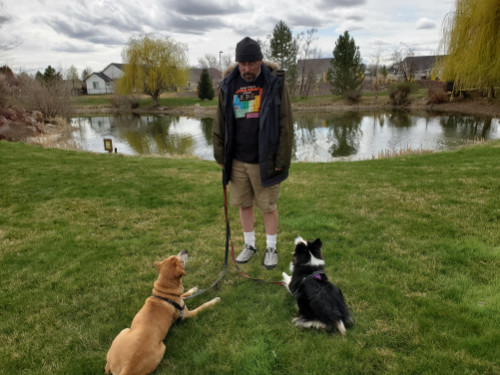Frequently Asked Questions
FAQ
At Alliance Dog Training, we are committed to using the most up-to-date techniques to train your dog. Positive reinforcement has been scientifically proven by multiple peer-reviewed studies to be the most humane method of training with the least chance of dangerous fallout.
Here are just a couple of findings and stances on behavior modification using positive reinforcement:
Journal of Veterinary Behavior“Those working with or handling dogs should rely on positive reinforcement methods and avoid using positive punishment and negative reinforcement as much as possible.”
The American Veterinary Society of Animal Behavior
“AVSAB emphasizes that behavior modification and training should focus on reinforcing desirable behaviors, avoiding the reinforcement of undesirable behaviors, and striving to address the underlying emotional state and motivations, including medical and genetic factors, that are driving the undesirable behavior.”

There are many types of aversive collars used in dog training. Alliance Dog Training does not believe pain needs to be inflicted in order for a dog to learn. As such, we do not employ the use of any so-called “training collars” including shock collars, prong or pinch collars, or choke chains. With a proper understanding of operant conditioning and how dogs learn, neither you or your trainer should have to hurt your dog to teach him.
Does your boss get better results by nagging you all the time about that project that’s due next week, or by rewarding you with a financial bonus when the project is turned in? Which of these options would you better respond to?
Studies have shown that shock collars do not teach good behaviors; they simply suppress the bad ones. The problem with this is once you remove that collar, the behaviors return. We are realistic here at Alliance Dog Training and acknowledge the shock collars do appear to get results. Many trainers still use this as their go-to because they believe it’s the best way to train a dog. Something to consider: Years ago, we thought the best way to deal with mental disorders was a lobotomy. However, science has shown us there are more humane ways to go about things. With so much information at our disposal, why would we NOT use better tools for behavior modification?
“Balanced” training uses both positive reinforcement AND punishment to train the dog. In the human world, balanced training sounds pretty…well, balanced. And shouldn’t you be punishing behaviors that you don’t like anyways?
The problem with punishing undesirable behaviors is that it doesn’t teach the dog what you DO want. While yelling at your dog or popping the leash when he’s pulling is gratifying for the human end of the leash, it doesn’t do much in the way of teaching the canine end. Now the HANDLER’S frustration has been slightly alleviated but the dog’s has just begun. He gets yanked for pulling so he slows down to sniff. But then he gets yanked for falling behind, too! What’s a dog to do?
Balanced training would dictate we pop the leash when he goes forward or backwards and give him treats or praise when he keeps the leash loose. Unfortunately, dogs have zero idea of measurement. What is OK? Can he go 6 feet? 4? When will he get yanked again? How does he know the loose leash is what you’re asking of him? The punishment aspect of balanced training undermines the your bond with your dog as well as his confidence and trust in you. For that reason, Alliance Dog Training does not use balanced training.
Do you work for free? I don’t, and I bet your dog doesn’t like to either! Positive reinforcement training is not bribery – it is a paycheck for a job well done. This is why timing is important! You offer a marker, THEN a treat – not the other way around. If you are offering a treat before your dog is giving you a behavior, then yes – that is absolutely bribing and your dog will begin looking for that treat before responding to any cues. The key here is to make sure he is doing the behavior before you “pay” him. After all, you don’t get paid until your job is done!
Done correctly, positive reinforcement or clicker training will NOT require you to carry treats and a clicker all the time. A good training plan fades out the clicker and treat in favor of verbal praise or another easily accessible form of reinforcement. Although you won’t HAVE to carry treats everywhere you will likely find this type of training fun and rewarding for you AND your dog and will often have them with you anyways!
